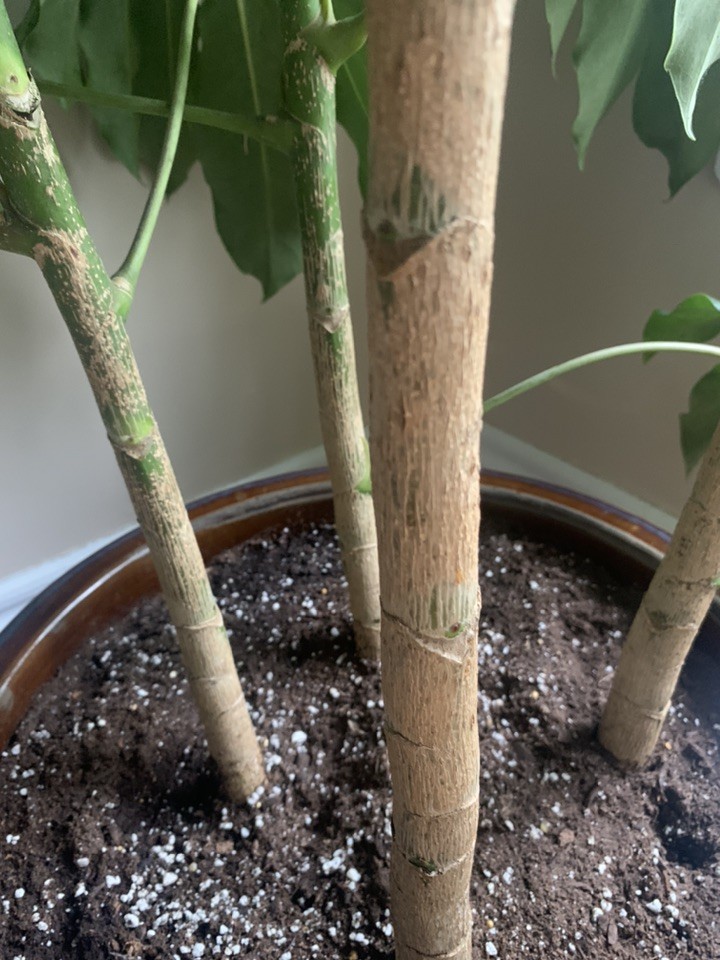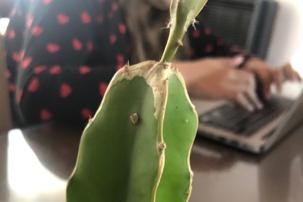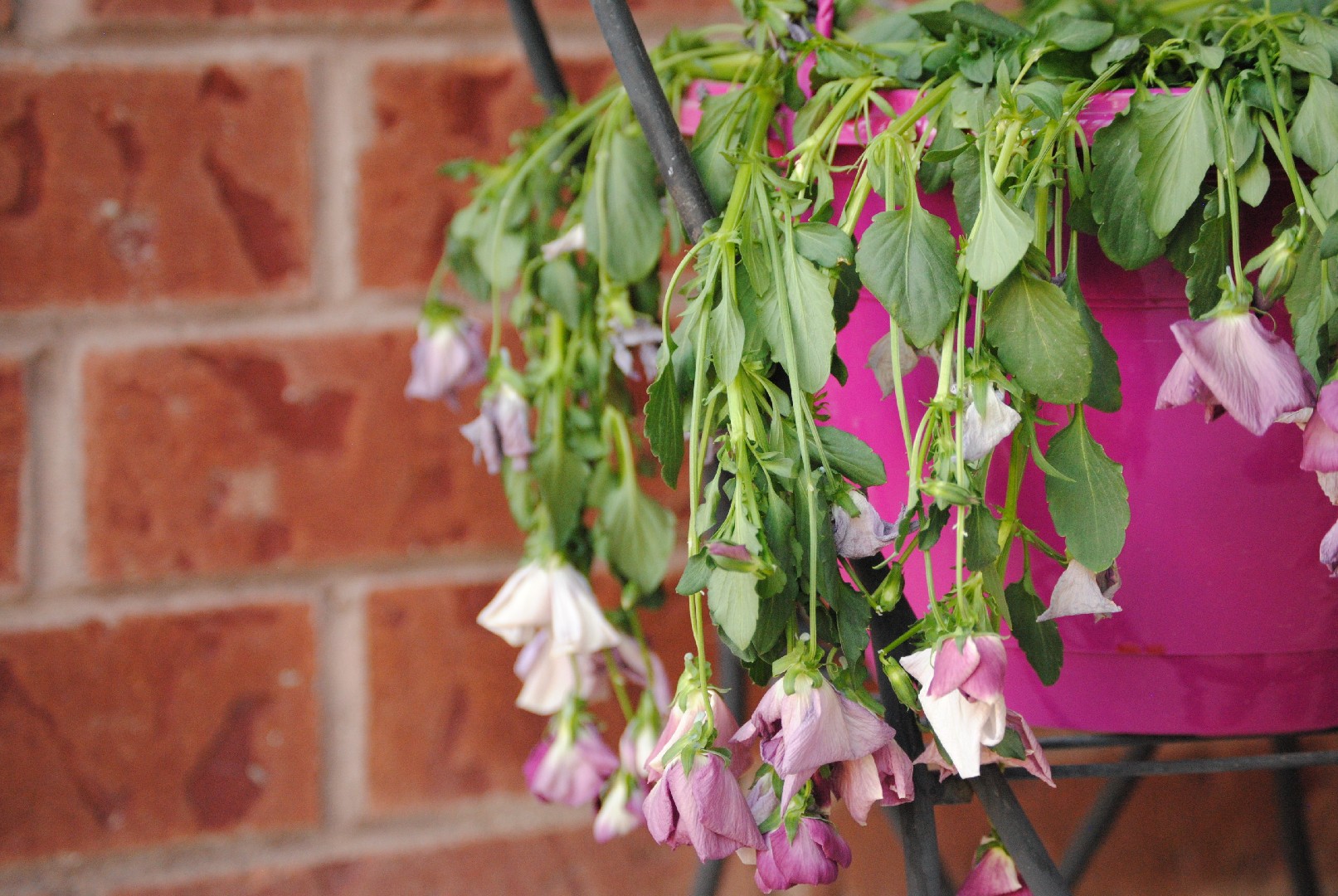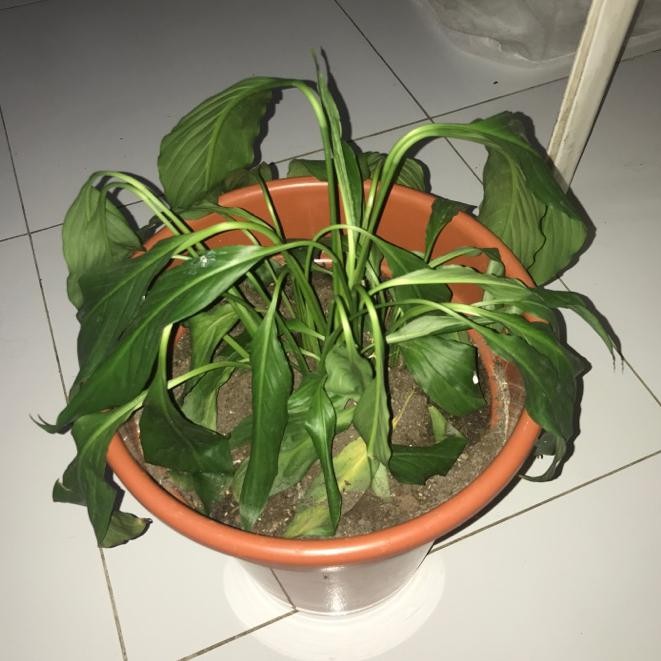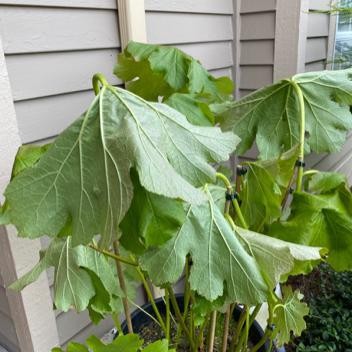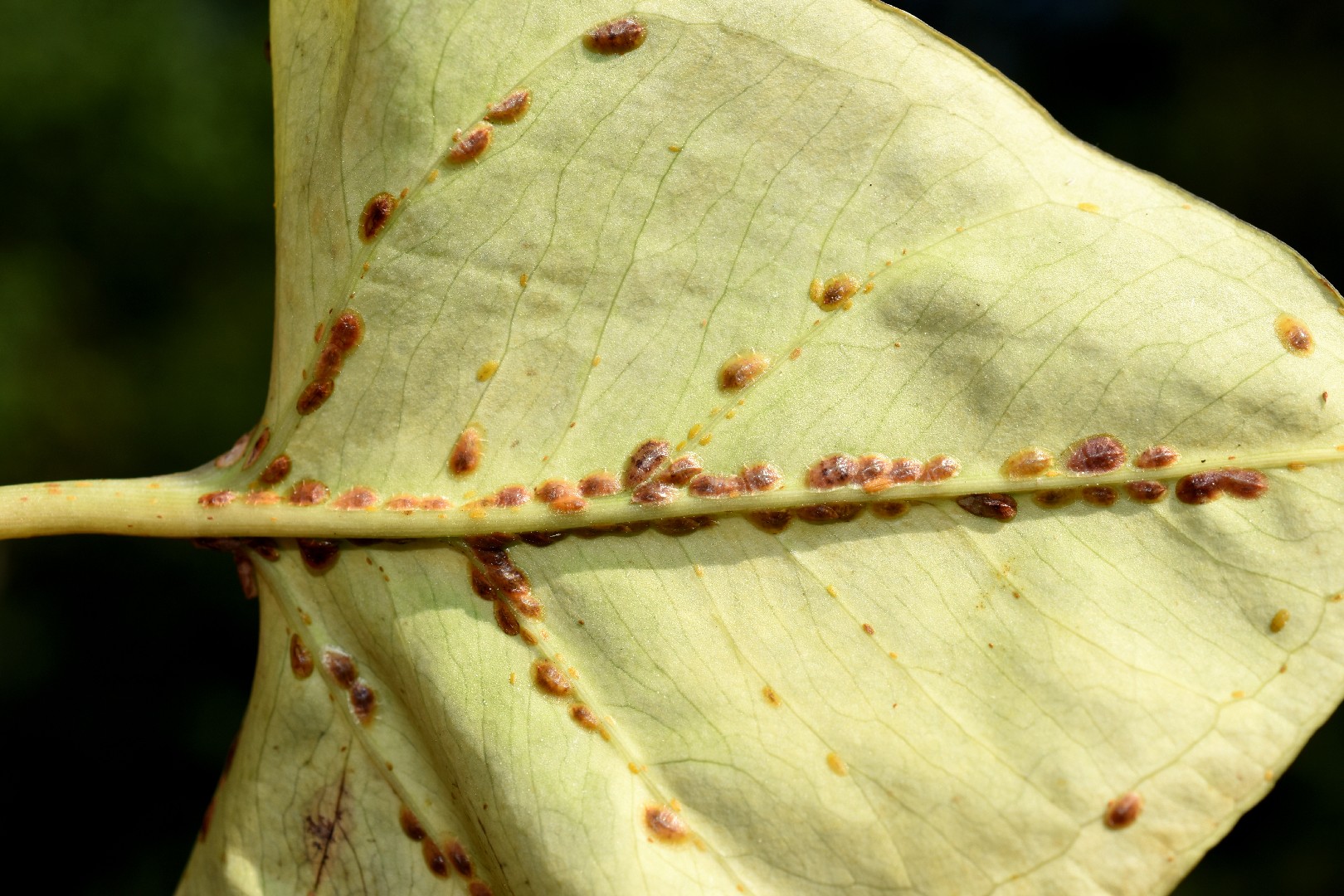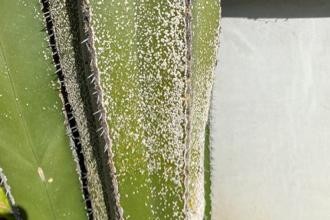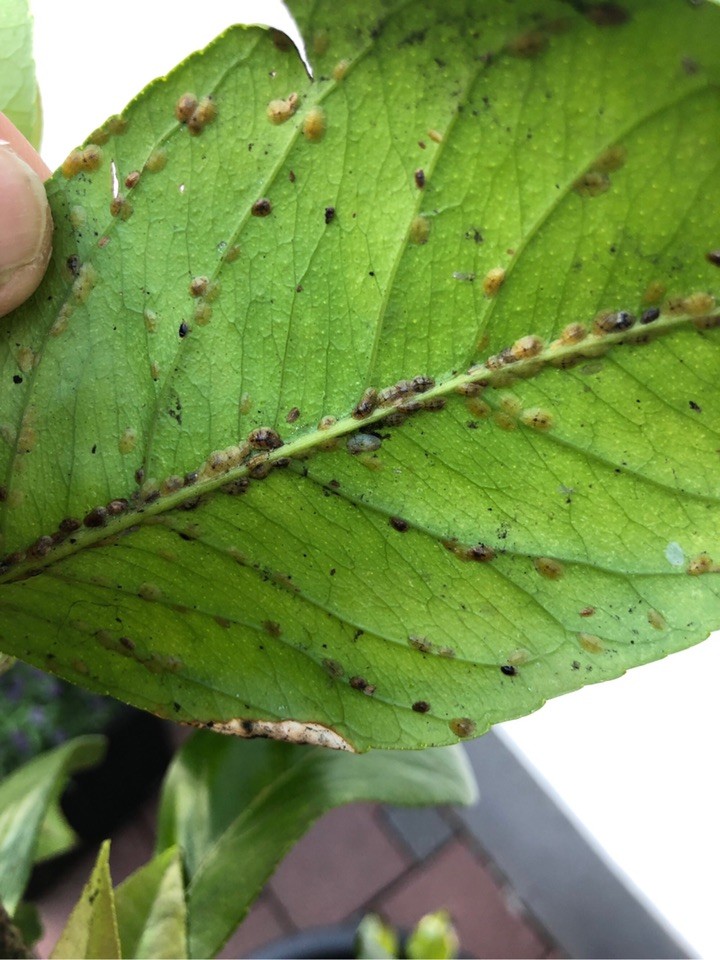What should I do if I water my Hoya pubicalyx too much or too little?
Underwatered Hoya pubicalyx Hoya pubicalyx and other succulents can endure long periods without water, so it’s unusual to find one of these suffering from underwatering. But, if you somehow forgot about your plant and neglected to water it for a month or more, you’ll probably find your Hoya pubicalyx looking thirsty or with some damage from lack of watering. It is very easy to identify an underwatered Hoya pubicalyx. Plant look lacklustre and wrinkled. Some may have dried up completely, turned brown and crispy, or dropped off the plant. And of course, the soil will be completely dried out. If your Hoya pubicalyx is thirsty and underwatered, give it plenty of water as soon as possible. Submerging the pot entirely in water for about 5-10 minutes is a good way to make sure the soil and plant are rehydrated properly. When you feel a sense of moisture on the surface of the soil with your finger, it means the watering is done properly. Overwatered Hoya pubicalyx Overwatering is dangerous to Hoya pubicalyx and can be fatal to your plant if you don’t remedy the situation. Too much moisture over time leads to root rot, which prevents the roots from being able to absorb nutrients and water from the soil. Root rot occurs when wet conditions allow fungi and bacteria to flourish in the soil and feed on roots. When you find that it's overwatered, you'd better change the growing conditions, place it somewhere with more air ventilation and adjust water frequency, for example. The symptoms of overwatering are yellow, swollen, and translucent organs that may even burst open from being over-full with water. If the problem continues without being treated, plant might turn brown or black, and fall off the plant at the slightest touch. Be sure to check the soil to determine if overwatering is the culprit, as some other issues can cause similar symptoms. It’s a bit difficult (but not impossible) to save an overwatered plant. The key is catching it early before a lot of damage has occurred. If the roots become rotten, it is likely to kill the entire plant. If you suspect you have overwatered your Hoya pubicalyx, the first step is to remove it from its pot and check the roots and soil. After removing the plant from its pot, gently remove wet soil from around the roots and then rinse them clean in room-temperature water. This helps with removing fungus that might be lurking in the soil and allows you to get a better sense of how healthy the roots are. If your plant has already developed root rot, you will see roots that are dark brown or black, soft, mushy, or slimy. If the majority of the roots are already affected by root rot, it may not be possible to save the plant. In this case, it is best to remove any healthy stem and try to use these to propagate a new Hoya pubicalyx. If, on the other hand, only a portion of the roots have succumbed to rot and other healthy roots still remain, there is a chance it can be saved. Use a sterilized cutting tool to remove any unhealthy-looking roots. Once you're left with only the firm, pale roots, it’s a good idea to dip them in a fungicide to kill off any remaining spores. After that you can repot your Hoya pubicalyx in fresh, free-draining potting soil. While this does not always work to save a succulent with root rot, in most cases this plant will be able to make a full recovery and will put out new growth starting in the next growing season.
![more]()
How often should I water my Hoya pubicalyx?
There’s not a hard-and-fast rule for how often to water Hoya pubicalyx. The best way to determine this is to check the soil and only water when it’s bone dry. You can either stick your finger in the pot or use a moisture meter to check the soil below the surface. When you plant it in a deep pot, you can do this with a stick or chopstick. If it feels even a little bit moist, wait a few days and check it again. Most people will need to water Hoya pubicalyx about every two weeks in summer and once a month in winter, but there are several factors that can change the frequency. The section below lists some considerations that can help you to determine how often to water.
![more]()
What should I consider when watering my Hoya pubicalyx?
There are several environmental conditions that will affect how your Hoya pubicalyx needs to be watered, including the container size, soil type, temperature, and humidity. First off, the container and soil you use will determine how often to water and how much water to use each time. Be sure you use a container with plenty of drainage holes in the bottom so extra water can escape the pot. A small container has less room for soil, meaning it won’t hold as much moisture, while a larger pot will stay wet longer and need to be watered less often. It’s important not to keep your Hoya pubicalyx in an oversized pot as this can easily lead to overwatering. When repotting, move to just one size larger than the current container. A shallow container works better than a deep one, since Hoya pubicalyx has shallow root systems. Hoya pubicalyx will need to be watered less often in winter and more often in the active growing season in spring and autumn. During the winter, growth slows down considerably and the plant isn’t using much energy or water. There is less water lost to evaporation in cooler winter air, meaning that soil stays wet for much longer than it would in the summer. This also applies to the general climate around your home. If you live in a humid location with a lot of rain, you will need to water less often than if you live in a dry, arid climate. Remember that conditions at the same geographic location can vary significantly with the season and the use of indoor heating and air conditioning. Outdoor Planting If Hoya pubicalyx is planted in the ground, after establishing a root system, it shouldn’t need supplemental water beyond what it receives through precipitation and dew. But if there is a long dry period, you may want to water occasionally. In other areas where Hoya pubicalyx can only be grown in a container, this plant can be moved outside in the spring and summer when the temperature is proper and then brought back inside when temperatures start to drop. A potted Hoya pubicalyx kept outside usually needs more water than the same plant kept indoors, because there is a lot more sun exposure even on a shaded porch.
![more]()
How to water Hoya pubicalyx?
The best way to water Hoya pubicalyx is to soak it thoroughly and then allow it to dry out before it gets watered again. Since this plant is somewhat drought tolerant, you can let it get quite dry before watering again. It is always better to give this type of plant too little water over too much. When you water, make sure the soil gets thoroughly soaked throughout the whole pot. Don’t pour the water in just one spot, but rather try to go around the whole rim of the planter to be sure that it has a chance to get wet on all sides of the plant. The correct amount of water will depend on the size of your container and how much water your soil absorbs. Give your Hoya pubicalyx enough water that it drains out from the drainage holes and then (ideally) leave the drained water in the saucer for about 20-30 minutes to absorb into dry pockets of soil. After that, discard any excess water that’s still in the saucer to avoid the soil getting waterlogged. Bottom-watering is also an excellent method for Hoya pubicalyx, as you can be sure that the soil gets thoroughly moistened. This process involves placing the pot into a saucer of water and allowing the soil to absorb moisture through the drainage holes. You will know that the soil has absorbed enough water when the top layer is moist. This takes a bit more time than top-watering, but is almost foolproof in getting an even distribution of water throughout the pot. The original habitat of Hoya pubicalyx is relatively dry with little rain, but when it rains, the soil will be thoroughly moistened. So you can mimic this situation by bottom-watering your plant when the soil is totally dry. Deep soil bathing is better than frequent light watering for Hoya pubicalyx.
![more]()
How many hours of sunlight does Hoya pubicalyx need to grow?
Hoya pubicalyx can grow in partial sun, but they still require a significant amount of light to thrive. They should get at least 3-6 hours of direct or indirect sunlight each day. It is important to note that the amount of sunlight will depend on the specific species of Hoya pubicalyx and their natural habitat.
![more]()
What will happen if Hoya pubicalyx doesn’t get enough sunlight?
Without enough sunlight, Hoya pubicalyx will become weak and may not grow properly. They may also develop etiolation (leggy growth), and the leaves may become pale or discolored. Hoya pubicalyx will also be more susceptible to pests and diseases if they do not receive enough sunlight.
![more]()
What will happen if Hoya pubicalyx gets too much sunlight?
If Hoya pubicalyx receives too much direct sunlight, they may become sunburned, resulting in brown spots on the leaves or stems. In extreme cases, the plant may become dehydrated and wilt. It is important to monitor the amount of sunlight that Hoya pubicalyx is receiving and make adjustments as needed.
![more]()
Cautions and tips
It is best to gradually introduce Hoya pubicalyx to more sunlight to prevent shock and sunburn. Start by placing them in partial sun for a few hours each day and gradually increase the amount of time they spend in the sun. It is also important to provide shade during the hottest parts of the day to prevent sunburn. When watering Hoya pubicalyx, it is important to avoid getting water on the leaves or in the crown of the plant. This can cause the plant to become burned or develop fungal diseases. Watering in the morning and avoiding watering in the evening can help prevent these issues. Hoya pubicalyx may benefit from fertilization during the growing season to encourage healthy growth. However, it is important to use a fertilizer specifically formulated for succulent plants and to follow the instructions carefully.
![more]()
What's the ideal temperature for your Hoya pubicalyx?
It is more suitable to keep the Hoya pubicalyx in a particular range of conditions. Temperatures the same as 75-90℉ (25-32℃) are ideal for it. During the early winter season, the temperature shouldn't go below 75℉(25℃) for Hoya pubicalyx. You can even move it indoors as it will have better protection from the extremes. Despite that, the Hoya pubicalyx can survive in some extreme temperatures. Sometimes can survive in low temperatures like 50℉ (15℃), but it is not ideal. You should bring it inside if winter conditions are expected outside.
![more]()
How should I adjust the temperature for my Hoya pubicalyx during different growing phases?
Hoya pubicalyx has different growing phases. In the first stage, the dormant seed grows and transforms into a seedling. The dormant seeds need the appropriate conditions in their surroundings to grow as their seeds need a temperature of 75-90℉ (25-32℃) to germinate. The ideal time to make it grow vigorously is during the summer, as the most suitable temperature is around 85℉(30℃). You can adjust the placement of your Hoya pubicalyx from indoors to sunlight during the hot summer months to receive enough sunlight.
![more]()
How can I keep my Hoya pubicalyx warm in cold seasons?
It's advisable to bring your Hoya pubicalyx indoors to avoid the harsh winter conditions. People opt to buy different types of grow light to provide enough sunlight for the plant. However, if your home is not extremely dark, it is not essential to buy these lights. Keep your plants where they will get the most sunlight possible. There should be sufficient light to keep the Hoya pubicalyx thriving in winter. If you have several Hoya pubicalyx, then keep them rotating so that they all receive enough sunlight. Avoid placing your Hoya pubicalyx too close to the window if you live in northern areas with frigid weather. The cold may be extreme to them, due to which they might get damaged.
![more]()
What happens to my Hoya pubicalyx when the temperature is too high or too low?
Your Hoya pubicalyx can grow better in summers and do better in warm temperatures 90℉(32℃) but you should protect it from temperature extremes during hot climates. However, during winter, it is better to keep your plant dry. Hoya pubicalyx do well in temperate climates having temperatures between 75-90℉ (25-32℃). However, some gardeners can expose their Hoya pubicalyx to extreme temperatures causing stress in their plants. While high temperatures ranging between 90℉ and 95℉(32-35℃) can help maintain the deep colors for Hoya pubicalyx, you must be careful when trying out such experiment. During the hot summer season extremely high temperatures can burn your Hoya pubicalyx damaging their stem and root system. During the hottest time of the day (when the temperature is extremely high), consider relocating your plant to a shaded place or protect them with a shade cloth.
![more]()
How should I adjust the temperature for my Hoya pubicalyx in different seasons?
In summers, high temperatures make the growth of Hoya pubicalyx slowed down to survive in too hot a temperature. As the cooler periods and rainfall begins, the Hoya pubicalyx starts growing. If the place you live in has hot summers and warm winters with more rainfalls, you aren't required to change anything. However, if you live in a place with cold winters, you should let your Hoya pubicalyx grow more in summer and rest in winter. It is because there is not enough sunlight for Hoya pubicalyx to grow in winter. You can help your Hoya pubicalyx enter dormancy if you live in a place with cold temperatures by decreasing the temperature to 50℉ to 75℉ (15℃ to 25℃).
![more]()
How can I keep my Hoya pubicalyx warm without a heating pad?
To withstand freezing temperatures outside, as a solution, you can insulate your Hoya pubicalyx with frost cloths, row covers, tents etc. You can also mulch your Hoya pubicalyx with small rocks. Mulching the Hoya pubicalyx soil will provide warmth to your plants and will not let you over-water the plant.
![more]()
How can I protect my Hoya pubicalyx from temperature damage?
Hoya pubicalyx is adapted to sunlight and requires sufficient sunlight for healthy growth. You can place it in an outdoor environment without any shade. However, Hoya pubicalyx shouldn't be kept for a long time in the blazing sunlight in the hot summer when it requires to be put under shade so that extreme temperature doesn't damage them. If the winter is extreme in our area, you must keep your Hoya pubicalyx indoors to keep them away from frost.
![more]()
What are the tips and precautions for keeping my Hoya pubicalyx at the right temperature?
Increase water and fertilizer during the growth of plants in spring and summer. Prevent your plant from receiving too much sunlight. To cool plants, spray water around them when the temperature is exceptionally high but don't put water on their stem.
![more]()
Why do I need to fertilize my Hoya pubicalyx?
Fertilizing Hoya pubicalyx adds nutrients to the growing medium. Even though it does store water and nutrients, applying plant food during the growing season helps support healthy growth. Fertilizing can also encourage mature specimens to produce blooms in the growing season.
![more]()
When is the best time to fertilize my Hoya pubicalyx?
While all plants benefit from additional nutrients, Hoya pubicalyx only needs a light dose of fertilizer during the growing season. The frequency of fertilization should be 1-2 times a year. It is suggested to fertilize your Hoya pubicalyx in the spring and autumn, but not in winter&summer when it is dormant. Be careful with repotted plants, you will want to reduce the amount of fertilizer. It’s also a good idea to wait a couple of months after repotting before you start applying fertilizer.
![more]()
When should I avoid fertilizing my Hoya pubicalyx?
Like most plants, Hoya pubicalyx has a dormancy period and it is when you want to stop the applications of fertilizer. In the summer and winter, the plant ceases growing, and it is when you want to stop applying fertilizer. It’s also a good idea to cease fertilizing for the first couple of months after repotting in the spring.
![more]()
What type of fertilizer does my Hoya pubicalyx need?
It’s best to use a liquid plant food formulated for succulents and cacti when you are fertilizing Hoya pubicalyx. Dilute the fertilizer with water to half-strength. You do not want the fertilizer building up in the soil. Apply the fertilizer to the base of the plant and water thoroughly, ensuring any excess moisture drains from the container or seeps into the ground.
![more]()
How do I fertilize my Hoya pubicalyx?
It is easier to use liquid plant food when you are fertilizing Hoya pubicalyx, but granules are another option. Follow the directions on the packaging, making sure you dilute liquid fertilizers to half-strength. Whether you are using granules are liquid plant food, always apply it to the soil. Cover the granules with a thin layer of soil and water regardless of the type of plant food you are using.
![more]()
What happens if I fertilize my Hoya pubicalyx too much?
Over-fertilizing Hoya pubicalyx is a common problem with new and experienced gardeners. The plant has low nutritional needs and it’s easy to apply a little too much fertilizer. Over-fertilizing Hoya pubicalyx can burn the plant’s sensitive roots resulting in its slow decay. Without its root system, the plant cannot absorb nutrients and moisture.
![more]()










